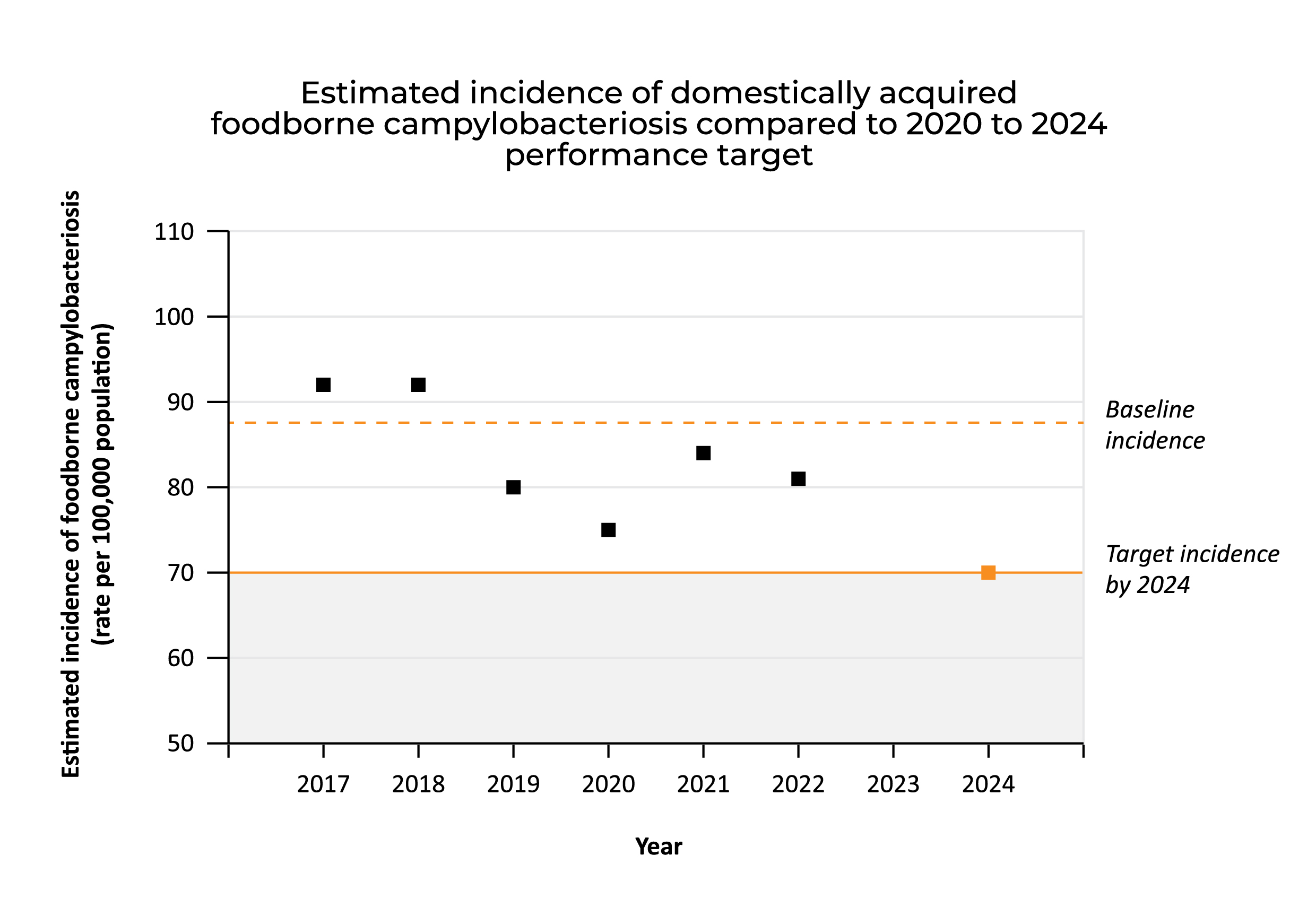Actions we've taken
The Ministry for Primary Industries has:
- helped more than halve foodborne campylobacteriosis since 2006
- put controls in place for food processors to limit Campylobacter levels
- developed a new strategy and action plan for 2020 to 2025
- set a goal to reduce foodborne cases by a further 20% by the end of 2024
- co-led production of international guidelines for controlling Campylobacter in poultry
- produced international guidance for verifying Campylobacter control in poultry processing
- in 2020, published a major case-control study of campylobacteriosis that estimates that 84% of foodborne Campylobacter cases are associated with the poultry pathway.
Our strategy is helping reduce rates of Campylobacter
The Ministry for Primary Industries (MPI) has a strategy and work plan to manage the risk of foodborne campylobacteriosis in New Zealand. We're aiming to reduce foodborne campylobacteriosis in New Zealand by 20% by the end of 2024.
Since 2006, our strategies have reduced foodborne campylobacteriosis in New Zealand. Our Campylobacter Action Plan mainly focuses on the poultry food chain. It uses a risk-based, farm-to-plate chain approach. The approach identifies, selects, and implements new control measures. These measures will greatly reduce the rate of campylobacteriosis in New Zealand.
Campylobacter Action Plan 2020-2024 [PDF, 272 KB]
A governance group oversees the action plan
A governance group meets regularly to review progress and discuss issues.
November 2023 meeting minutes of the governance group [PDF, 385 KB]

Research helps us to control Campylobacter
To prioritise our work on Campylobacter, we need to understand the importance of different:
- sources of Campylobacter
- ways people get infected.
To do this, we've done a lot of research on the poultry, meat, and milk food chains.
Setting regulatory limits for chilled poultry carcasses
In 2008, we introduced the Campylobacter performance target (CPT). It measured Campylobacter levels in processed chicken, to check how effectively our measures reduced levels. We will continue to sample Campylobacter to make sure processors are producing food within acceptable limits. Samples are taken through our National Microbiological Database (NMD).
National Microbiological Database programme for meat
Source assigned campylobacteriosis in New Zealand study
Campylobacter case control study summary – SACNZS
Source Assigned Campylobacteriosis in New Zealand Study (SACNZS) [PDF, 5.4 MB]
Collaboration with Consumer NZ
Are frozen, crumbed chicken products safe to eat? – Consumer NZ
International influence
International food safety standards are coordinated through the Codex Alimentarius Commission. New Zealand and Sweden co-led Codex work to develop the international guidelines for control of Campylobacter and Salmonella in chicken meat.
Guidelines for control of Campylobacter and Salmonella in chicken meat
In 2014, we prepared guidance for best hygienic practice in poultry processing. This was published internationally for other countries to adapt and use.
Campylobacter symptoms and advice
Related information
Foodborne disease annual reports
Safe cooking of livers: information for chefs
Who to contact
If you have questions about our Campylobacter research or our risk management strategy, email info@mpi.govt.nz






